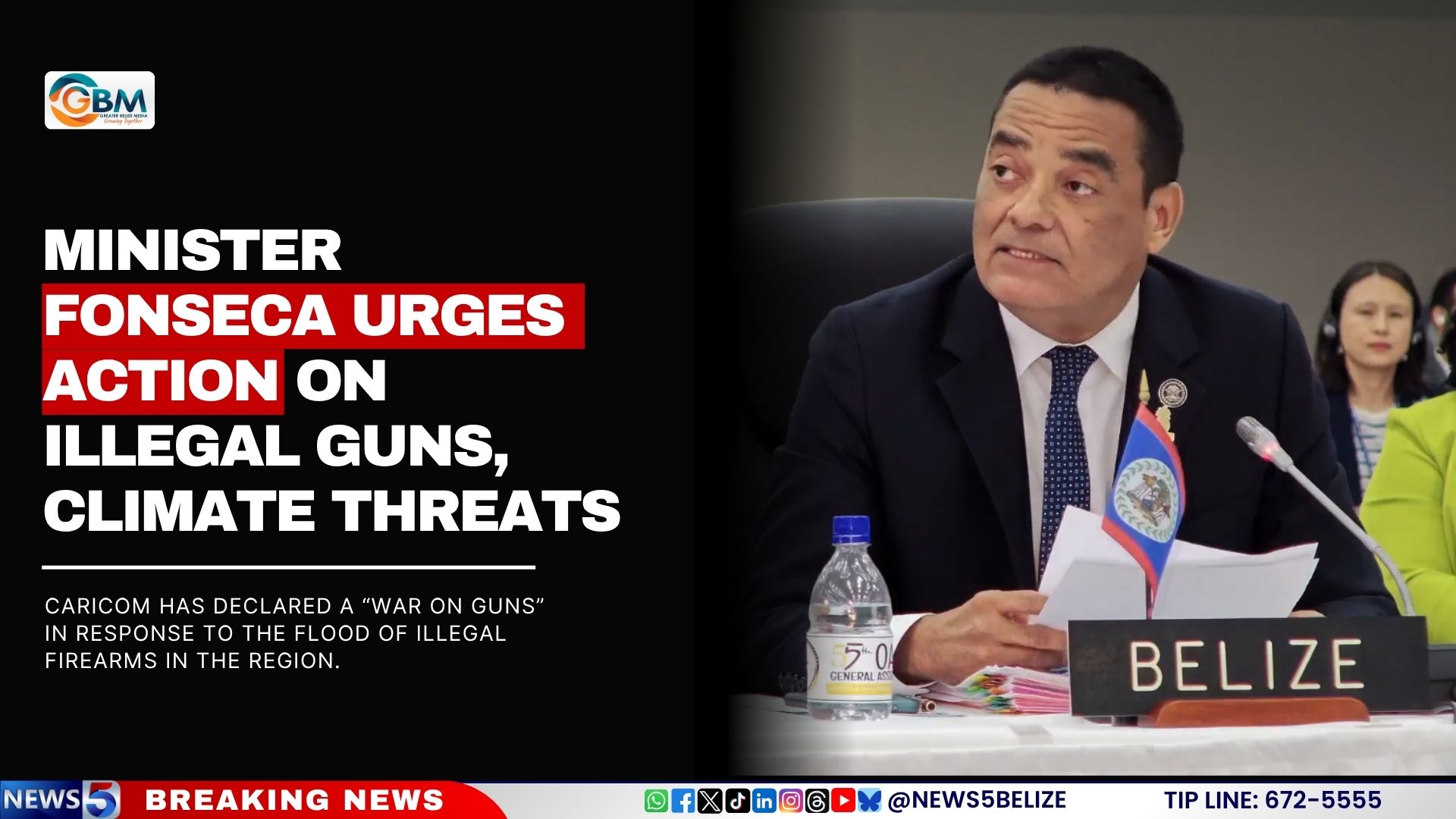Minister of Foreign Affairs Francis Fonseca represented Belize at the 55th Regular Session of the Organisation of American States (OAS) General Assembly in St John’s, Antigua and Barbuda, last week.
Fonseca delivered a strong call for urgent, coordinated action to address some of the most pressing crises facing the hemisphere.
Minister Fonseca warned that Latin America and the Caribbean continue to struggle with extreme poverty, inequality, food insecurity, and high rates of violence. “In some countries, it is estimated that violence costs as much as eight per cent of GDP,” he stated. “The human and economic toll is staggering.”
Fonseca said that tackling these issues would require coordinated, hemispheric action. “Root causes such as poverty, the illegal arms trade, and transnational organised crime must be tackled collectively,” he said.
He drew particular attention to the gun crisis in the Caribbean, pointing out that CARICOM has declared a “war on guns” in response to the flood of illegal firearms in the region. “Nowhere are the devastating effects of illegal arms trafficking more tragically evident than in Haiti,” Fonseca said, expressing Belize’s full support for Haitian-led efforts to restore constitutional order. “Words of concern must be followed by concrete, sustained action,” he urged.
Migration was another key focus of Fonseca’s address. He pointed out that Belize, like many small states, is both a transit and destination country. “While every state has the sovereign right to protect its borders, we must approach this challenge with compassion, solidarity, and in accordance with international law,” he said. “Desperation must not be criminalised. Instead, we must humanise our policies and stand with the most vulnerable.”
Fonseca also addressed climate change, calling it an existential threat to small island and coastal states. “Climate-related disasters are increasing in frequency and intensity, undermining productivity, food and water security, and public health, and placing unprecedented strain on our fiscal space,” he warned.
He noted that Caribbean countries are already leading in clean energy adoption. “Our region exceeds the global average in the adoption of clean energy and produces over one third of the world’s lithium, which is vital to a sustainable energy future,” Fonseca said. He encouraged stronger hemispheric collaboration leading up to COP30 and emphasised the importance of advancing the adaptation and loss and damage agenda.
Addressing the need for stronger regional integration, Fonseca called for the removal of trade barriers and increased intra-regional trade. “Greater regional integration will reduce our vulnerability to external shocks and contribute to sustainable economic growth,” he stated.
Fonseca also touched on global conflicts, reiterating Belize’s call for diplomacy and peace. “We believe that the peoples of all states deserve to live in peace, security, dignity, and freedom,” he said.
He also warned of growing threats across the hemisphere. “We have seen attempts to erode democratic institutions, silence independent media, and restrict civil society,” Fonseca said. “Belize stands resolutely in defence of democratic governance, the rule of law, and transparency.”
He also touched on the OAS’s crucial role in supporting peace between Belize and Guatemala through the OAS office in the Adjacency Zone. “Belize expresses its deep appreciation, not only to the OAS but also to the supporting permanent observers, in particular the Kingdom of Spain, the Republic of Italy, and the European Union,” Fonseca said. “Their contributions have been instrumental in maintaining stability on the ground.”
